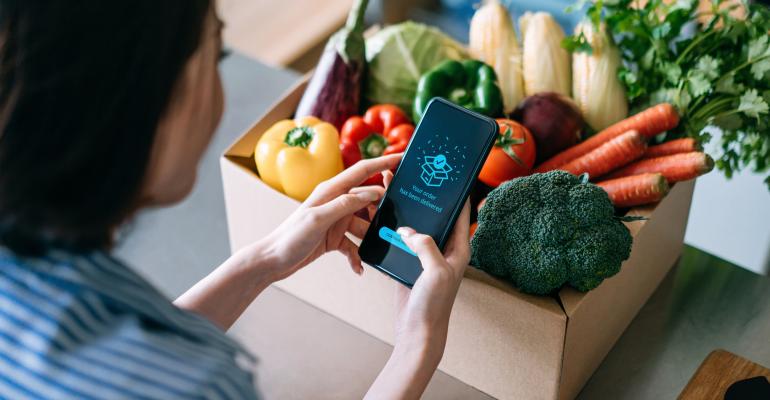Sponsored by Vericast
Online shopping has become a convenience, albeit one with a high price tag. But physical stores are still where the majority of consumers prefer to do their grocery shopping. To keep consumers spending in-store, grocers will need to implement innovative solutions that save time and improve the experience.
“Retailers should think beyond the transaction,” says Julie Companey, director, client strategy at Vericast. “Human interaction has been more valued since the pandemic, so the human interaction at your store is important. You can’t replicate that online.”
Indeed, the time is ripe to reset consumer expectations about in-store grocery shopping. Here are five solutions to help you get it right:
- Go digital with planning tools. As consumers cook at home, many plan their meals ahead of time and look for solutions that will make preparation faster and easier. Consider taking the approach of Idaho-based Albertson’s, which recently introduced Meal Plan and Schedule & Save features to its Just for U Loyalty program. The new tools reduce the time and effort it takes to grocery shop by allowing members of the grocery giant’s loyalty program to menu plan and create a corresponding shopping list, and to auto-replenish essential products on their lists at a discount.
- Simplify the shopping process with new store layouts. Many things have changed about grocery shopping in the last decade, and even more so during the pandemic—the proliferation of online ordering and curbside pickup, to name a few. Yet, store layouts have largely remained the same—until now. A growing number of retailers are reimaging their store layouts to better meet the needs of busy consumers who still prefer to shop in-store. For example, Giant Eagle Express is a 14,000-square-foot store near Pittsburgh designed with the intent to provide busy consumers what they need for a fill-in trip or a weekly shopping trip, as well as a selection of fresh and prepared food offerings. In another instance, Metropolitan Market’s latest location in Gig Harbor, Washington, was designed to mimic a restaurant dining experience. The layout is focused on interactions with different foods and flavors, showcasing fresh ingredients alongside prepared foods.
- Improve the in-store experience with QR codes. As grocers look for new ways to compete on customer experience, some are using QR codes to provide consumers with additional information about products, deals, and discounts. Most notable is the Amazon-owned Whole Foods where Amazon Prime members can scan the QR code using their smartphone at checkout to instantly redeem their Amazon Prime benefits, Similarly, Kroger recently rolled out scan-and-go and deli-ordering kiosks. Using QR codes has even more possibilities for grocers to improve the in-store experience. For example, if you have a product you want to move, say frozen salmon filets, you can use a QR code on the package or display case to provide serving ideas, inspirations, and even chef-created recipes and a list of necessary ingredients available in your store. Experts also forecast that produce may soon use engraved QR codes in place of those pesky price-look-up stickers consumers always complain about having to peel off. The possibilities are boundless.
- Offer a unique customer experience. Retailers get it. There is a lot of competition in the grocery space right now. Finding a way to spice up the mundane errand of grocery shopping can lead consumers to associate your store with good vibes and uniqueness—and a desire to come back. Take a critical look at your offerings and search for areas to add new features—think cooking demos, free sampling, or touch-screen kiosks that serve up information about products and discounts not advertised elsewhere. Consider non-food-centric additions as well, such as Heinen’s new Personalized Nutrition Center, which began operating in its Mayfield Village, Ohio, store in January 2022. Rather than doling out vaccines and prescriptions, the Center offers dietary counseling that can also include a diagnostic panel that creates personalized nutrition recommendations.
- Build-in opportunities for community. Consumers have long seen grocery stores as functional spaces to get in and get out of quickly. As the pandemic wanes and consumers seek more in-person connections and a sense of community, there is a huge opportunity for grocers to go beyond the transactional. Among the companies already taking this approach is a Giant supermarket in downtown Philadelphia. Designed around the theme of “a reason to gather,” the selling floor features natural lighting, wood materials, custom light fixtures, and works by local artists that create an inviting, stay-a-while feel. The ground floor hosts a "Giant Direct Station with an online order pickup area, a beer garden with a self-serve tap wall, and an upscale food hall with a variety of seating options.
To learn more about what today’s grocery shoppers want and fresh ways to provide it for them in your stores, contact the experts at Vericast.

